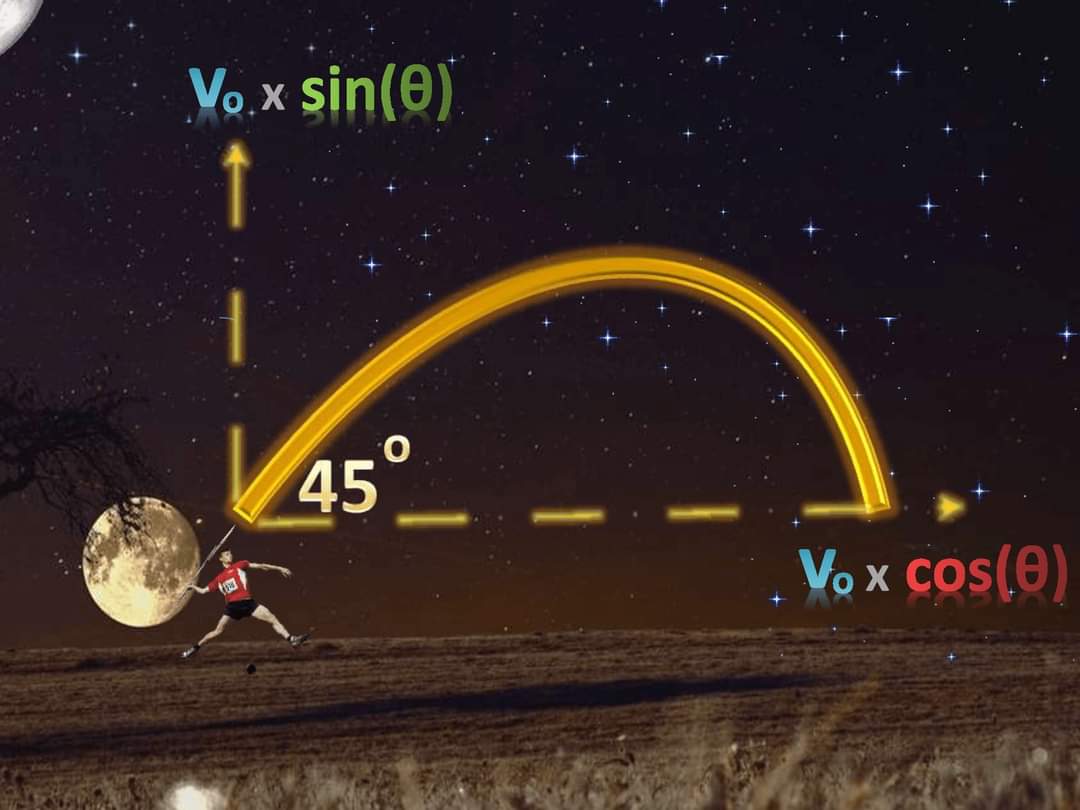So, you are a visual learner and want to learn about projectile motion intuitively huh ?
The projectile motion of an object has 2 components.
1) The velocity component parallel to the ground, aka
real part of the velocity aka
initial velocity x cos(angle of throw)
Denoted asVo x cos(thetha)
(Initial velocity in some books is denoted as u, in others as Vo.
I will be using Vo. )
2) Then there is a perpendicular component to this velocity aka the imaginary part of the velocity .
Written as
Initial velocity x sin(angle of throw)
Denoted as
Vo x sin(thetha)

An analogy to this would be a single branch of a tree splitting into 2 branches.
Or taking an axe and cutting a log of wood into 2 parts.Is it necessary that these daughter parts should be of equal size w.r.t each other ? But surely bringing them together will create the whole right ?
Similarly (real part)^2 + (imaginary part)^2 = (whole thing)^2.
So squaring and bringing together the real and imaginary parts via addition will give you the whole thing.
Now coming back to projectile motion,
Range actually = (2 x real part of initial velocity x imaginary part of initial velocity) / acceleration due to gravity.









No comments:
Post a Comment